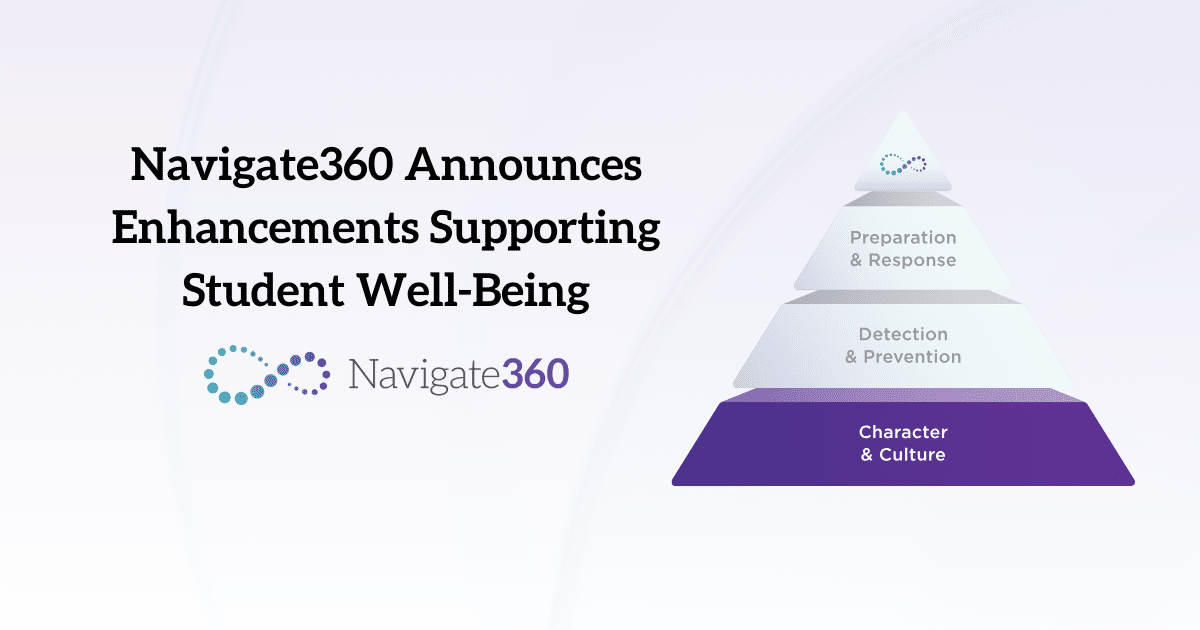There’s no denying it: Today’s students rely on the Internet and digital technology more than any generation that has come before them. Between essential online activities like distanced learning and extracurricular and social interactions such as social media and gaming, Gen Z and Gen Alpha students are digitally connected like never before.
For schools, this digital evolution has seemingly created as many challenges as it has opportunities. For one, identifying legitimate safety threats in a sea of constantly updated information requires constant vigilance. Data from 2019 indicates that 38% of threats of school violence are delivered through social media (Statista, 2019).
Additionally, many schools have mandated guidelines and criteria they must satisfy when it comes to online safety, requiring accurate reporting and stringent implementation. And once a school or district has identified a credible threat requiring intervention, a process is needed for prioritization, accountability and effective assessment to address concerns before they escalate.
Considerations for the Digital Age
When it comes to protecting students online, one of the biggest issues facing schools is the vastness of digital space. Experts estimate that in just 24 hours, between 50 and 100 million new URLs are registered. What’s more, communication occurs in a wide variety of digital formats, making the detection and identification of concerning online behavior difficult. Adding to the problem is the fact that students can send voice recordings, memes and images featuring text, emojis, slang terms and other forms of communication that are difficult to identify and assess. In fact, recent data suggests that 49% of Instagram and Facebook posts contain emojis (Statista, 2019). If school safety personnel manually scan for potential threats among students online and in digital media, would they be able to find a photo of a student holding a gun or a student using a meme graphic hinting suicidal ideation?
How to Protect Students Online
While the sheer volume of information on the Internet and in digital spaces can be overwhelming, there are modern options for managing threats to students online. The good news for schools is that online communication provides information that might otherwise have gone unnoticed. This information, known as “leakage,” is warning behavior that may signal the signs of troubling future behavior, including researching, planning and implementing an act of violence or harm.
In days past, many types of leakage would be completely invisible. These include conversations in the schoolyard or anonymous phone calls that can’t be monitored or traced. Thankfully, digital leakage is much more detectable and can be harnessed to help schools identify negative behaviors before they escalate. To do this, schools need the core components listed below.
Blocking
Actively blocking and restricting access to harmful and dangerous content is a crucial first step for any school. However, modern digital spaces require more than just a list of banned URLs. Schools must be on the lookout for other harmful content that must be blocked on a network level, including viral links and re-hosted media that was previously filtered.
Scanning
Effectively scanning digital communication for leakage and other indicators of potential harm is a difficult task, but it’s one that can be accomplished by AI-driven computer programs. Given the complexity of online communication, scanning software must be able to adapt to new forms of expression and evolve as needed. Old methods of simple keyword searches are far less effective these days.
Evaluation
After leakage and other troubling behaviors are identified, schools must have a way to manage and assess threats to provide an appropriate response and resources for students. Additionally, managing the existing interventions of students and tracking ongoing behavior can help schools prevent escalation.
Digital Safety Solutions for Modern Schools
Though there are a wide range of threats facing students today, school officials can do their part in protecting students online with help from Navigate360. Navigate360 Threat Detection & Prevention solutions enable administrators and other school safety officials to identify troubling behavior and accurately assess and manage intervention needs before behaviors escalate and result in potentially tragic outcomes.
Detecting Potential Threats Online
Thanks to help from proprietary AI-driven processes, Navigate360 Detect can actively scan public social media and school-owned email for threats and other concerning behaviors. With image-recognition software that helps spot leakage that other programs might miss, Detect can give administrators powerful insights into the context of online communication.
Assessing & Managing Threats Before They Escalate
With Navigate360 Behavioral Threat & Suicide Case Management, administrators can identify and categorize troubling behavioral patterns among students and coordinate a response among different officials. With Behavioral Threat & Suicide Case Management, schools can provide crucial resources to students in crisis before behavior escalates, preventing potentially tragic outcomes. Plus, officials can access extensive data and records to monitor overall program effectiveness and comply with state and federal requirements.
Protect Students Where They Are
Although digital spaces have created new, unprecedented dangers and threats for students and schools alike, they also contain solutions for the future. Protect the digital lives of your students and create a safer school environment with Navigate360.
Find out more by watching our Detecting Harmful Signals webinar or reading more about Navigate360 Detect and Behavioral Threat & Suicide Case Management.




